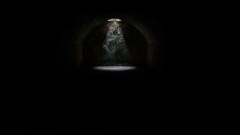At the very heart of the gospel, at the very heart of the Christian faith, are two great miracles, two inseparable miracles, through which a dead man is brought to life. The first miracle is justification; here a condemned sinner is made right in the eyes of a perfect judge. The second miracle is regeneration; here a hater of God and a hater of good is transformed into a lover of God and a lover of all that is good and right. Despite the importance of these two, confusion reigns, even among Christians, about what they are and what they mean. In Justification and Regeneration Charles Leiter sets forth a biblical understanding of each of these, the similarities, the differences, the misconceptions, the truth.
He begins the book in the most obvious spot, focusing on sin as man’s ultimate problem. After all, it is sin that makes both justification and regeneration a tragic, though wondrous, necessity. He says, rightly, that sin is the ultimate and only problem of humanity. He turns next to a brief explanation of how a man can be righteous before God without it being some kind of a legal fiction or some kind of a pardon that comes at the expense of justice. Next, he dedicates a chapter to each of the twin topics of justification and regeneration. But the heart of the book comes in a series of nine short chapters, each of which stands as a biblical description of the great miracle of regeneration. He says, rightly, that “each description views the same glorious reality from a different angle, while illuminating different facets of it.” Here is the list of these descriptions: A New Creation; A New Man; A New Heart; A New Birth; A New Nature. After looking to Crucifixion and Resurrection, he shows that justification brings about five different changes of realm: Flesh to Spirit; Earth to Heaven; Sin to Righteousness; Law to Grace; Adam to Christ. Actually, the last two chapters break from the pattern just a little bit. In “Law to Grace” he looks at both justification and regeneration within the wider biblical context of law and grace in the final chapter he zooms out a bit further even, looking at what it means to be “in Christ.” “Christianity is Christ. Every spiritual blessing is found “in Him”–including all the blessings of justification and regeneration–and no spiritual blessing exists apart from Him.”
At this point the book is at only page 133 of 176. The remainder of the book is dedicated to a series of useful appendices (not often words that go side-by-side). In these appendices he summarizes the truths of regeneration, he looks at the difficult words “cannot sin,” he looks at Romans 7 and some of the age-old controversies surrounding that chapter, he writes about “All blessings in Christ” and he answers some frequently asked questions.
Though dealing with a deep subject and one of critical importance, Justification and Regeneration is very accessible and is written in a way suited even to new believers. The chapters are short, making it easy to read just a few pages at a time. Charles Leiter has done us a great service with this book. I know of no better, more accessible study of these two great truths.










